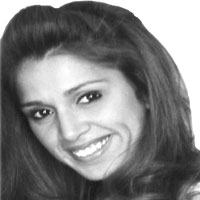Opinion Ahmedinejad,balanced
The man annoys as much as he amuses,but as his power faces its stiffest challenge yet,one wonders if Irans President...
The man annoys as much as he amuses,but as his power faces its stiffest challenge yet,one wonders if Irans President Mahmoud Ahmedinejad is still capable of pushing the odd and unacceptable views on the international community that he has in the past. As his new cabinet took office three months after Irans fateful elections,the Security Council met to discuss the countrys nuclear programme. Now there have been statements from his cabinet that they have drawn up a fresh series of proposals and are willing to come to the diplomatic table,but it accompanies the heard one-too-many times statement: nuclear programme is our inalienable right. Peaceful,they say,but what of reports of uranium enrichment? And if they are baseless then why limit access to sites? True,haphazard behaviour was to be expected; look at Irans track record.
But Ahmedinejad can no longer blindly misbehave. Divisions within Irans political elite and with top clerics at Qom and Najaf are evident especially if you follow key cleric Rafsanjanis actions both prior to and immediately after the election. Further,note how many members of the clergy were missing from his inauguration; recall the weird embrace between him and Ayatollah Khameini,a vast difference from the affectionate hug theyd shared last time. The president,previously powerful,now has a bit of a balancing act to perform,appeasing rival factions.
One lesson from the elections aftermath is that a formidable lobby would gladly usurp his power and position. He now must court not simply powerful clerics who sense their authority slipping away,but even his core support base,the Iranian Revolutionary Guard Corps or IRGC.
The insider politics of Irans political establishment is more defined now than ever before. In a nutshell,the powers of the presidency are being checked. Those taking this on? A family called Irans Kennedys: the influential and Khomeini-approved Larijani brothers,who command the reins of two out of the three branches of government.
The most formidable challenge comes from Ali,the eldest though its Sadegh who now heads the judiciary. Ali stood for president,and then was Ahmedinejads chief nuclear negotiator until he quit due to irreconcilable differences. Now,as the speaker of parliament,he has vetted Ahmedinejads cabinet choices and blocked some appointments. Sadegh,too,has the authority to make Ahmedinejads life difficult: the judiciary he runs has oversight over the political arrests made after the election protests,and over the accompanying accusations of rape and torture.
The conservative Larijanis favour some sort of rapprochement with the West as do many other,more moderate,clerics. But what of the military men?
Post election,the motives of the IGRC surfaced for the first time. They regard themselves as the true keepers of the Iranian revolution,a calling hallowed through their service in the Iran-Iraq war. It is their support that has allowed Ahmedinejad to grow. He comes from their ranks,and although the facts are vague it is generally believed they pushed him to the presidency in 2005. In his new cabinet,defence and intelligence are the IRGCs. Their current loyalty to him is evident through their involvement in restoring order after the disputed elections. General Yadollah Javani,political head of the IGRC claimed that today,no one is impartial. There are two currents; those who defend and support the revolution and establishment,and those who are trying to topple it.
One questions: who are the ones trying to topple it? Are the reformists the ones that threaten the principles of the revolution? But what of the reformists own churning? The simple answer is that the entire political climate in Iran is undergoing radical changes. Karim Sadjadpour of Carnegie maintains that shifts in the political spectrum can be seen at various levels of the bureaucracy. For instance,ten years ago,the Larijanis would have been considered arch-hardliners; but the spectrum has moved so far right in recent years that now,compared with Ahmedinejad,they appear somewhat moderate.
So,ultimately it looks like the guards against the clerics. And its Ahmedinejads uneasy role to reconcile the two opposing factions.
So,as 5+1 talks resume,remember Ahmedinejad is no longer the supremo dictating terms inside Iran were accustomed to thinking him but rather point man for a divided elite,shuffling between two powerful factions.
alia.allana@expressindia.com





